
Irrigation resources
Find everything you need to successfully manage your neighborhood irrigation system.
Your one-stop shop for all things irrigation
Looking to start your irrigation service? Have questions about how it all works? We can help:
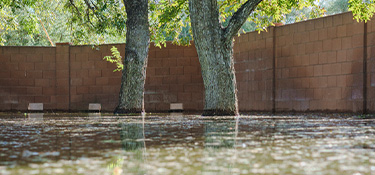
How flood irrigation works
Learn about how our irrigation system works and the role SRP plays in delivering water to the Valley.
View page
Signing up for flood irrigation
See if your property qualifies, learn how to set up your flood irrigation account and find contact information for help.
View page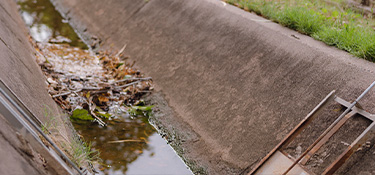
System repair and maintenance
A well-maintained irrigation system is an asset to your neighborhood. Find tips and resources to help you keep it in working order.
View page
Working with your neighbors
Maintaining and repairing your neighborhood irrigation system is a team effort. Learn how to work together to maintain your private system.
View page
Paying your SRP irrigation bill
Find all the help and resources you need to pay your irrigation bill online, over the phone or in person.
View page
Account management
Managing deliveries, ordering water and a list of how-to's. All in one place.
View page-
746 billion
Gallons of water is stored in the SRP system
13,000
Most irrigation water comes from SRP's 13,000-square-mile watershed — channeling rain and melted snow into the Salt and Verde rivers.
-
2–3 inches
During flood irrigation, yards are filled with 2–3 inches of water. This helps the water soak deeply into the soil, allowing trees and plants to grow strong, deep roots.
Neighbors must work together to build and maintain private irrigation systems.
-
260 billion
Gallons of water delivered each year
131 miles
SRP manages 131 miles of canals and 1,000 miles of smaller canals called laterals.
746 billion
Gallons of water is stored in the SRP system
13,000
Most irrigation water comes from SRP's 13,000-square-mile watershed — channeling rain and melted snow into the Salt and Verde rivers.
2–3 inches
During flood irrigation, yards are filled with 2–3 inches of water. This helps the water soak deeply into the soil, allowing trees and plants to grow strong, deep roots.
Neighbors must work together to build and maintain private irrigation systems.
260 billion
Gallons of water delivered each year
131 miles
SRP manages 131 miles of canals and 1,000 miles of smaller canals called laterals.
Governing bodies
SRP is made up of two organizations. The Salt River Valley Water Users’ Association, also known as “the Association,” is a private water corporation that was formed in 1903. The Salt River Project Agricultural Improvement and Power District, also known as “the District,” is an agricultural improvement district and political subdivision of the State of Arizona that was formed in 1937. Each of these organizations is governed separately. Learn more.
SRP is made up of two organizations. The Salt River Valley Water Users’ Association, also known as “the Association,” is a private water corporation that was formed in 1903. The Salt River Project Agricultural Improvement and Power District, also known as “the District,” is an agricultural improvement district and political subdivision of the State of Arizona that was formed in 1937. Each of these organizations is governed separately. Learn more.
Landowners in SRP's service territory with grandfathered irrigation rights may receive reporting forms from the ADWR and water-use letters from SRP each January. If you have questions about these forms or need assistance filling them out, please call (602) 236-5011.
Grandfathered rights typically belong to land on which there was an established water right prior to 1980. These grandfathered parcels were recognized in 1982 pursuant to the Groundwater Management Act. If you intend to sell or have sold your property with grandfathered rights, notify ADWR at (602) 771-8585. Visit ADWR’s use reports page for more information.
Landowners in SRP's service territory with grandfathered irrigation rights may receive reporting forms from the ADWR and water-use letters from SRP each January. If you have questions about these forms or need assistance filling them out, please call (602) 236-5011.
Grandfathered rights typically belong to land on which there was an established water right prior to 1980. These grandfathered parcels were recognized in 1982 pursuant to the Groundwater Management Act. If you intend to sell or have sold your property with grandfathered rights, notify ADWR at (602) 771-8585. Visit ADWR’s use reports page for more information.
The challenge and privilege of overseeing the Salt River Valley Water Users' Association rests with the elected Board and Council — 42 representatives who administer and set its business policy.
Elections occur on the first Tuesday of April during even-numbered years. Information on voting eligibility and precinct location is available by calling (602) 236-3048.
The challenge and privilege of overseeing the Salt River Valley Water Users' Association rests with the elected Board and Council — 42 representatives who administer and set its business policy.
Elections occur on the first Tuesday of April during even-numbered years. Information on voting eligibility and precinct location is available by calling (602) 236-3048.
A history of transforming the desert
The people of Arizona have long harnessed the power of water through irrigation to grow and strengthen the area. The predecessors of the present-day Salt River Pima-Maricopa Indian and Gila River Indian communities were the Hohokam, farmers who lived in central and southern Arizona for about 1,400 years before European and American explorers came to the region.
Canal history
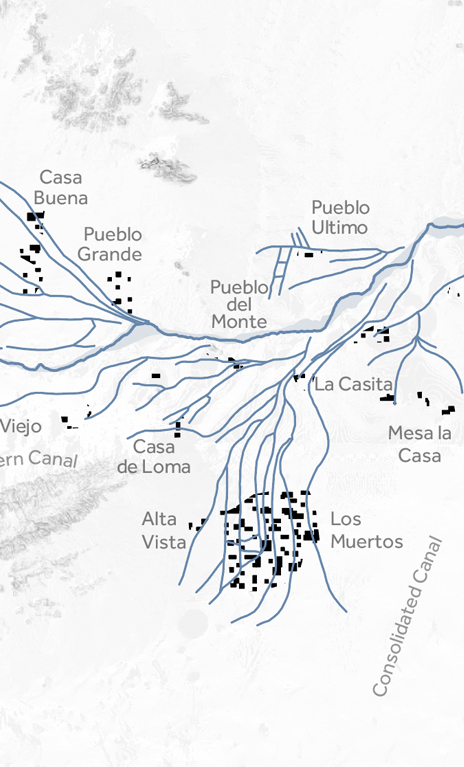
The groundwork
The ancient desert dwellers set the groundwork for the SRP canal system, which follows many of the same paths today.
500 miles
The intricate canal system that they built spanned nearly 500 miles and may have served as many as 50,000 people at one time.
Ancient farmers
Archaeologists don't know exactly why the ancient farmers stopped maintaining their canals around A.D. 1450. It is thought that environmental changes, drought, violent floods or eroding rivers may have made it difficult to farm the Salt River Valley.

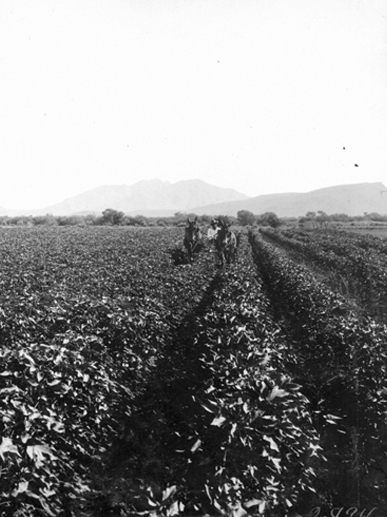
A (gold) rush of pioneers
In 1867, the Swilling Irrigation and Canal Company was formed by 17 arrivals who came to Arizona as part of the gold rush. Their plan was to take water from the Salt River by canal to grow crops and sell them to miners at Wickenburg and the U.S. Cavalry stationed at Fort McDowell. By March 1868, farmers under the Swilling Irrigation and Canal Company had harvested their first crops on land near the present-day Arizona State Hospital.
A (gold) rush of pioneers
In 1867, the Swilling Irrigation and Canal Company was formed by 17 arrivals who came to Arizona as part of the gold rush. Their plan was to take water from the Salt River by canal to grow crops and sell them to miners at Wickenburg and the U.S. Cavalry stationed at Fort McDowell. By March 1868, farmers under the Swilling Irrigation and Canal Company had harvested their first crops on land near the present-day Arizona State Hospital.
Settlers form a water association
Sourcing water was challenging for a booming population. In 1903, a diligent group of valley ranchers and farmers formed the Salt River Valley Water Users’ Association (SRVWUA) in 1903. The group offered up their land as collateral for federal funds to build Roosevelt Dam, believing that storing water for a more reliable supply was the key to the long-term growth and prosperity of the Valley.
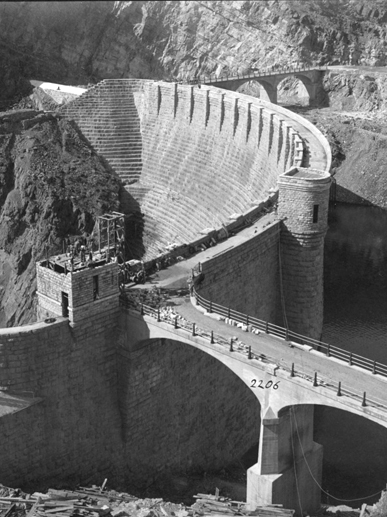
Settlers form a water association
Sourcing water was challenging for a booming population. In 1903, a diligent group of valley ranchers and farmers formed the Salt River Valley Water Users’ Association (SRVWUA) in 1903. The group offered up their land as collateral for federal funds to build Roosevelt Dam, believing that storing water for a more reliable supply was the key to the long-term growth and prosperity of the Valley.